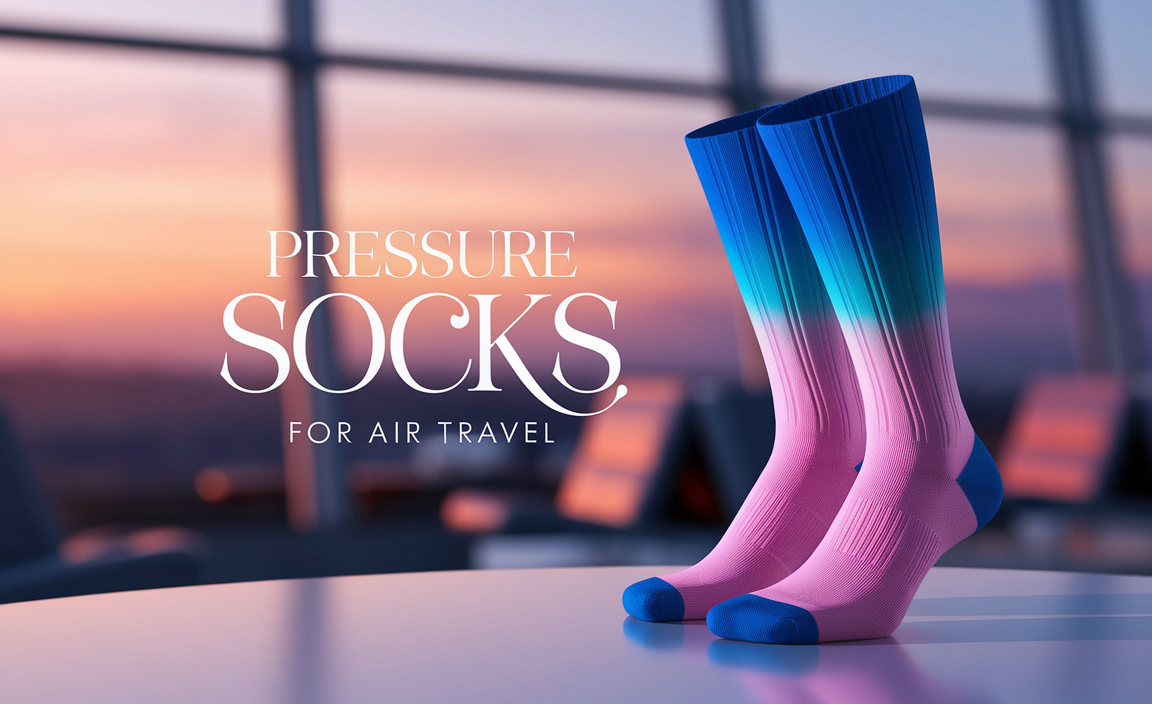Planning a trip to Alexandria doesn’t have to be complicated. This guide offers essential, easy-to-follow tips to ensure your accessible travel experience in this historic city is comfortable, safe, and enjoyable. We cover everything from getting around to where to stay and what to see, making your visit stress-free.
Alexandria, a city steeped in history and charm, beckons travelers with its ancient wonders and Mediterranean allure. However, for those with accessibility needs, exploring new destinations can sometimes feel overwhelming. Will there be ramps?
Are public transport options suitable? Can I comfortably visit the historical sites? These are common questions that can lead to travel anxiety. But fear not! With a little preparation and the right information, Alexandria can become an incredibly rewarding and accessible destination for everyone. This guide is designed to provide you with the practical, real-world advice to navigate the city with confidence, ensuring your journey is filled with discovery, not distress. From understanding local transport to finding accommodating accommodations, we’ve got you covered.
Alexandria Accessible Travel Guide: Navigating the City with Ease
Alexandria, Egypt, is a city where ancient history meets the vibrant pulse of modern life. For travelers seeking to explore its iconic landmarks, from the legendary Library of Alexandria to the bustling Corniche, accessibility is key. This guide provides essential tips for an enjoyable and stress-free accessible trip, empowering you to make the most of your visit.
Planning Your Accessible Trip to Alexandria
A well-planned trip is the foundation of an accessible adventure. Thinking ahead about your needs ensures a smoother experience in Alexandria.
Researching Accommodation
When booking your stay, look for hotels that explicitly mention accessible rooms. These often feature wider doorways, roll-in showers, grab bars, and lower countertops. It’s also advisable to contact the hotel directly to confirm the specifics of their accessibility features and to discuss any particular needs you might have. Many booking websites allow you to filter for accessible rooms, but a direct conversation can offer greater peace of mind.
Key Considerations for Accommodation:
Room features (grab bars, roll-in showers, accessible beds)
Elevator access to all floors
Proximity to public transport and attractions
Staff training on assisting guests with disabilities
Understanding Transportation Options
Navigating Alexandria requires understanding its transport system. While fully accessible public transport can be a challenge, options exist.
Taxis and Ride-Sharing: These are often the most convenient options for direct transport between destinations. Many taxi companies can accommodate specific requests, and ride-sharing apps might allow you to specify vehicle needs, though availability can vary. It’s always a good idea to pre-book if possible or to have contact information for reputable taxi services known for helpful drivers.
Private Accessible Transport: For a more tailored experience, consider arranging private accessible transport in advance. Several local tour operators and specialized services offer vehicles equipped for wheelchair users or those with other mobility needs. This provides a predictable and comfortable way to explore.
Public Buses and Metro: While Alexandria’s public transport network is expanding, accessibility on buses and the metro can be inconsistent. Some newer metro stations and trains may offer better accessibility, but it’s wise to check the latest information and be prepared for potential challenges, such as stairs or crowded platforms. The Egyptian National Railways provides information on accessible travel on its services, which can be relevant for longer journeys to and from Alexandria.
Essential Items for Accessible Travel
Packing smart can significantly enhance your comfort and independence.
Mobility Aids: Ensure your wheelchair, scooter, or any other mobility device is in good working order before you leave. Pack a repair kit with essential tools and spare parts if applicable.
Comfort and Personal Care: Depending on your needs, consider packing items like portable cushions, travel-sized personal care necessities, and for those who require them, discreet and comfortable adult or child diapers to ensure peace of mind during your explorations. Having reliable adult diapers for travel can significantly reduce anxiety, allowing you to focus on enjoying your trip without worry about finding facilities or potential accidents.
Medications and Medical Supplies: Carry all necessary medications in their original packaging, along with prescriptions. It’s also a good idea to have a basic first-aid kit.
Chargers and Power Banks: Ensure you have adapters for Egyptian outlets and portable power banks to keep your devices charged, especially for navigation and communication.
Informing Yourself About Accessibility at Attractions
Before visiting any site, do some research on its accessibility. Many major historical sites in Alexandria are making efforts to improve access, but conditions can vary.
The Library of Alexandria: This modern marvel is generally well-equipped with accessible facilities, including ramps, elevators, and accessible restrooms.
Qaitbay Citadel: While the exterior offers impressive views, navigating the interior of this ancient fortress might present challenges due to uneven surfaces and stairs. It’s advisable to check with the site directly for the most current accessibility information.
Catacombs of Kom El Shoqafa: This underground Roman burial site can be challenging due to its historical structure and the potential for narrow passages and steps.
Pompey’s Pillar: The area around the pillar is generally accessible, offering good viewing opportunities.
Communication and Support
Learning a few basic Arabic phrases can be helpful, but English is widely spoken in tourist areas. Don’t hesitate to ask for assistance; many Egyptians are known for their hospitality and willingness to help. Consider downloading translation apps and having contact information for your hotel or local assistance services readily available.
Getting Around Alexandria: Accessible Transportation Tips
Navigating a new city can be a significant part of the travel experience, and for accessible travel, it’s crucial to have reliable options. Alexandria offers a mix of traditional and modern transport, and understanding how to best utilize them is key.
Taxis and Ride-Sharing Services
Taxis are ubiquitous in Alexandria and can be a convenient way to travel between points of interest.
How to Use: Hail taxis from the street or have your hotel arrange one. For specific needs, such as a larger vehicle or a driver accustomed to assisting passengers with disabilities, it’s best to book in advance through a reputable private car service.
Tips for Accessibility:
When booking, clearly state your needs (e.g., “I have a wheelchair and need a spacious car,” or “I require assistance getting in and out of the vehicle”).
Confirm the fare or agree on an estimate before starting your journey, especially for longer trips.
Ride-sharing apps like Uber and Careem operate in Alexandria and can offer a convenient way to book a car. While they may not always have specific accessible vehicle options, they provide fare transparency and driver-passenger communication features.
Public Buses and the Metro
Alexandria’s public transportation system is evolving, with the metro offering a more modern and potentially accessible option than older bus routes.
Metro: The Alexandria Tram and Metro system is a developing network. Newer stations and carriages are increasingly designed with accessibility in mind, often featuring ramps and elevators. However, accessibility can vary significantly between stations. It is advisable to pre-plan your route and check information for specific stations if possible. For the latest infrastructure details, you can sometimes find information from the Egyptian National Railways, which oversees some public transit projects.
Buses: Traditional bus services can be more challenging for travelers with mobility issues due to high steps and crowded conditions. Accessibility features are not consistently available.
Private Accessible Tours and Vehicle Hire
For a truly seamless experience, especially if you plan to visit multiple sites or have specific comfort requirements, consider arranging private transport.
Benefits:
Vehicles often have ramps or lifts.
Drivers are typically experienced in assisting passengers with disabilities.
You can tailor the itinerary to your pace and needs.
Eliminates the stress of relying on unpredictable public transport.
How to Arrange: Search for “accessible tours Alexandria” or “wheelchair accessible transport Egypt” online. Many tour operators catering to international tourists can arrange these services. Booking well in advance is recommended, especially during peak tourist seasons.
Walking and Navigating Sidewalks
While Alexandria’s Corniche offers a pleasant promenade, sidewalks in other areas can be uneven or obstructed.
Be Prepared: Wear comfortable, sturdy shoes. Be aware of your surroundings, as sidewalks may not always be well-maintained or may have obstacles.
Utilize Accessible Routes: Where available, stick to newer developments or areas known for better pedestrian infrastructure.
Tips for Comfort and Safety
Hydration: Always carry water, especially during warmer months.
Pacing: Plan your day with ample rest breaks. Don’t try to cram too much into one day.
Assistance: Don’t hesitate to ask locals for help if you need it. Politeness and a smile go a long way.
Emergency Contacts: Keep a list of important phone numbers, including your hotel, embassy, and any local emergency services. You can find general emergency numbers for Egypt on government travel advisories.
By understanding these transportation options and planning accordingly, you can navigate Alexandria effectively and enjoy its many attractions without undue stress.
Accessible Attractions in Alexandria: Must-See Sights
Alexandria offers a wealth of historical and cultural attractions. Many are working to improve accessibility, allowing more visitors to experience their wonders.
The New Library of Alexandria (Bibliotheca Alexandrina)
This iconic modern institution is a tribute to the ancient Library of Alexandria. It’s designed with state-of-the-art accessibility features, making it one of the most accessible sites in the city.
Accessibility Features:
Ramps and elevators are available throughout the complex.
Accessible restrooms are clearly marked.
Wide corridors and open spaces facilitate easy movement.
Audio guides and braille materials may be available upon request.
What to See: Explore the main reading room, museums, art galleries, a planetarium, and various exhibitions. It’s a great place to start to get a feel for the city’s blend of history and modernity.
Qaitbay Citadel
This impressive 15th-century Mamluk fortress stands on the Mediterranean coast, on the site of the ancient Pharos lighthouse. While it’s a historical monument, efforts have been made to improve visitor access.
Accessibility Considerations:
The exterior grounds and path leading to the citadel are generally accessible.
Accessing the ramparts and interior chambers may involve stairs and uneven surfaces.
It’s best to inquire at the entrance about the most accessible routes for viewing the architecture and enjoyments.
What to See: Enjoy stunning sea views, explore the outer defenses, and imagine the history that has unfolded here.
Roman Amphitheatre (Kom El Dikka)
This well-preserved Roman amphitheater dates back to the 2nd century AD and offers a fascinating glimpse into Alexandria’s Roman past.
Accessibility Considerations:
The upper viewing areas and surrounding pathways are often accessible.
Reaching the lower seating tiers may be challenging due to steps.
The adjacent museum section has some accessible areas.
What to See: Imagine the spectacles of ancient times as you view the tiered seating and stage area.
The Catacombs of Kom El Shoqafa
These unique underground tombs represent a fascinating blend of Egyptian, Greek, and Roman artistic styles.
Accessibility Considerations: This is one of the more challenging sites due to its underground nature, narrow passages, and winding stairs. Accessibility is limited, and it may not be suitable for all wheelchair users or those with significant mobility impairments. Exploring the upper levels might be possible, but detailed exploration requires navigating confined spaces.
What to See: Witness the distinctive tomb architecture and the famous “Car of the Dead” sculpture.
Pompey’s Pillar and Serapeum Ruins
Pompey’s Pillar is a massive Roman triumphal column and one of the most recognizable landmarks remaining from ancient Alexandria. The surrounding ruins of the Serapeum are also of historical interest.
Accessibility Considerations:
The area surrounding Pompey’s Pillar and the main ruins is largely open and relatively flat, making it accessible for viewing.
The ground can be uneven in places, so caution is advised.
What to See: Admire the grandeur of Pompey’s Pillar and explore the remnants of the ancient temple complex.
The Corniche
Alexandria’s picturesque waterfront promenade stretches for miles along the Mediterranean Sea. It’s a hub of activity and a wonderful place for a leisurely stroll or roll.
Accessibility Considerations:
The Corniche itself is a paved promenade, generally flat and wide, making it ideal for accessible exploration.
Enjoying the sea breeze and views is easy from countless points.
Some cafes and restaurants along the Corniche have accessible entrances.
What to See: Take in the sea views, observe local life, and visit attractions along the waterfront.
Museums (e.g., Alexandria National Museum)
Museums are often good options for accessible travel as they are usually designed with modern visitor comfort in mind.
Accessibility Considerations:
The Alexandria National Museum, housed in a beautiful historic building, generally offers good accessibility with elevators and ramps to most of its exhibition areas.
Check with individual museums for their specific accessibility features.
What to See: Discover artifacts spanning Alexandria’s rich history, from the Pharaonic era through to the Ottoman period.
Dining and Shopping: Accessible Experiences
Enjoying the local cuisine and finding souvenirs are essential parts of any travel experience. Alexandria offers diverse options that can accommodate accessible needs.
Accessible Dining
Alexandria boasts a vibrant culinary scene, from seafood restaurants along the coast to traditional Egyptian eateries.
Restaurants on the Corniche: Many modern restaurants and cafes lining the Corniche are designed with accessibility in mind. They often feature ground-floor access, spacious interiors, and accessible restrooms. Enjoying fresh seafood with a sea view is a delightful accessible option.
Traditional Eateries: When exploring more traditional areas, accessibility can be more variable.
Tip: Look for restaurants with entrances at street level. If there are steps, don’t hesitate to ask staff if they can assist or if there’s an alternative entrance. Many smaller establishments are accustomed to helping guests.
Menu Exploration: Egyptian cuisine offers many delicious options, including koshary, falafel, grilled meats, and fresh salads. Many dishes are naturally vegetarian or can be adapted.
Cafes: Numerous cafes offer a relaxed atmosphere for enjoying coffee or tea. Many newer cafes have accessible facilities.
Shopping for Souvenirs and Goods
Alexandria offers a range of shopping experiences, from bustling souks to modern shopping centers.
Modern Shopping Malls: Malls, such as City Centre Alexandria or San Stefano Grand Mall, are generally well-equipped with accessible facilities, including elevators, ramps, and accessible restrooms. These offer a comfortable environment to shop for clothing, electronics, and souvenirs.
Local Markets and Souks: Exploring traditional souks, like Attarine Market, can be a more challenging but rewarding experience.
Considerations: Souks can be crowded, with narrow pathways and uneven ground. Accessibility is limited.
Tip: If you wish to explore, go during less busy hours (earlier in the day) and consider going with a companion who can assist. Focus on accessible stalls or smaller shops on the periphery if full immersion is difficult.
What to Buy: Look for handcrafted items, textiles, spices, and local crafts as keepsakes.
Ensuring Comfort During Your Shopping Excursions
Pacing: Shopping can be tiring. Plan your excursions with breaks in between.
Assistance: If you require assistance navigating crowded areas or reaching items, ask shopkeepers or accompanying companions.
Hydration: Keep water with you, especially when browsing markets.
Essential Tips for a Comfortable and Secure Stay
Beyond attractions and transport, ensuring your comfort and security is paramount for a successful accessible trip to Alexandria.
Accessibility Information Resources
Local Tourist Information Centers: While not as common as in some Western countries, seeking out tourist information points can provide local insights, though specific accessibility details might be limited.
Hotel Concierge: Your hotel’s concierge can be an invaluable resource for information on local accessibility.
Online Resources: Websites and travel forums dedicated to accessible travel can offer user-generated reviews and tips from fellow travelers. Organizations like the Accessible Travel website can provide general guidance, though specific Alexandria information might need direct searching.
Health and Safety Considerations
Food and Water Safety: Stick to bottled water and be cautious with street food, especially if you have a sensitive stomach. Look for busy establishments where food turnover is high for eateries.
Sun Protection: The Egyptian sun can be intense. Use sunscreen, wear a hat, and seek shade during the hottest parts of the day.
Emergency Services: Familiarize yourself with emergency numbers. In Egypt, general emergencies can often be reached by dialing 122 for Police or 123 for Ambulance.
Travel Insurance: Ensure you have comprehensive travel insurance that covers medical emergencies and any specific needs related to your mobility aids or health conditions.
Packing for Comfort and Preparedness
As mentioned earlier, packing the right items is crucial.
Comfortable Clothing: Lightweight, breathable clothing is best for Alexandria’s climate.
Sturdy Footwear: Essential for navigating various terrains.
Personal Care Items: Pack any specific personal care items you rely on, such as adult or child diapers. Carrying a supply of comfortable and reliable adult diapers for extended travel, long flights, or days of sightseeing can greatly reduce stress and enhance your ability to participate fully in activities. Ensure they are discreet and designed for comfort and absorbency.
Medications: Bring more than you think you’ll need, along with copies of prescriptions.
Portable Charger: Essential for keeping phones and other devices powered up for navigation and communication.





